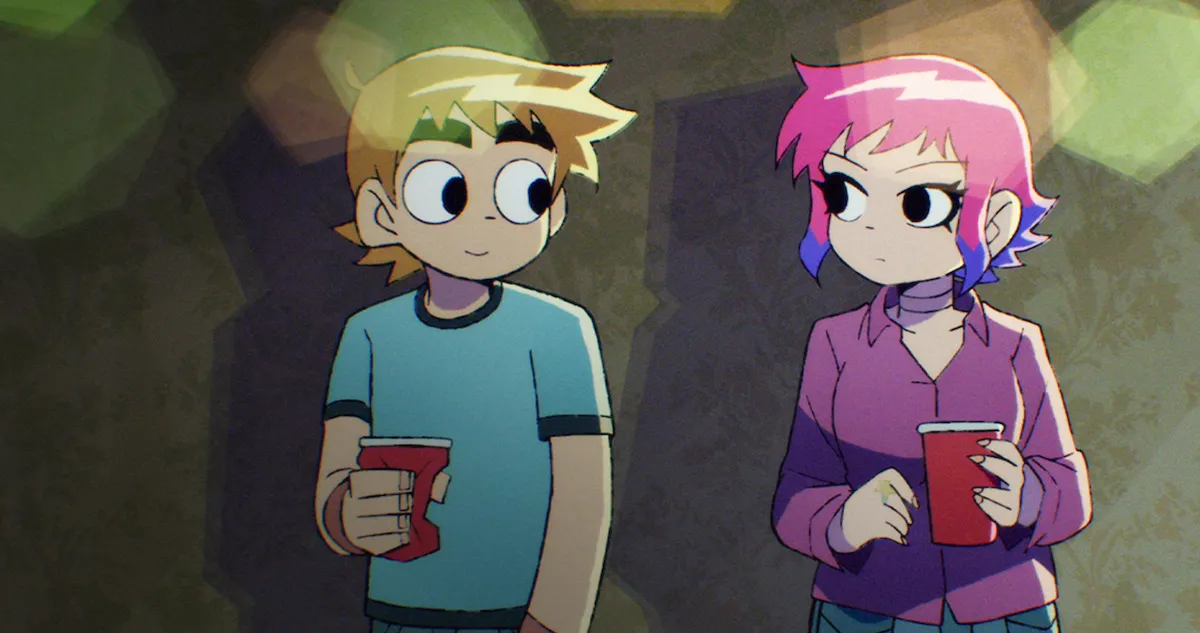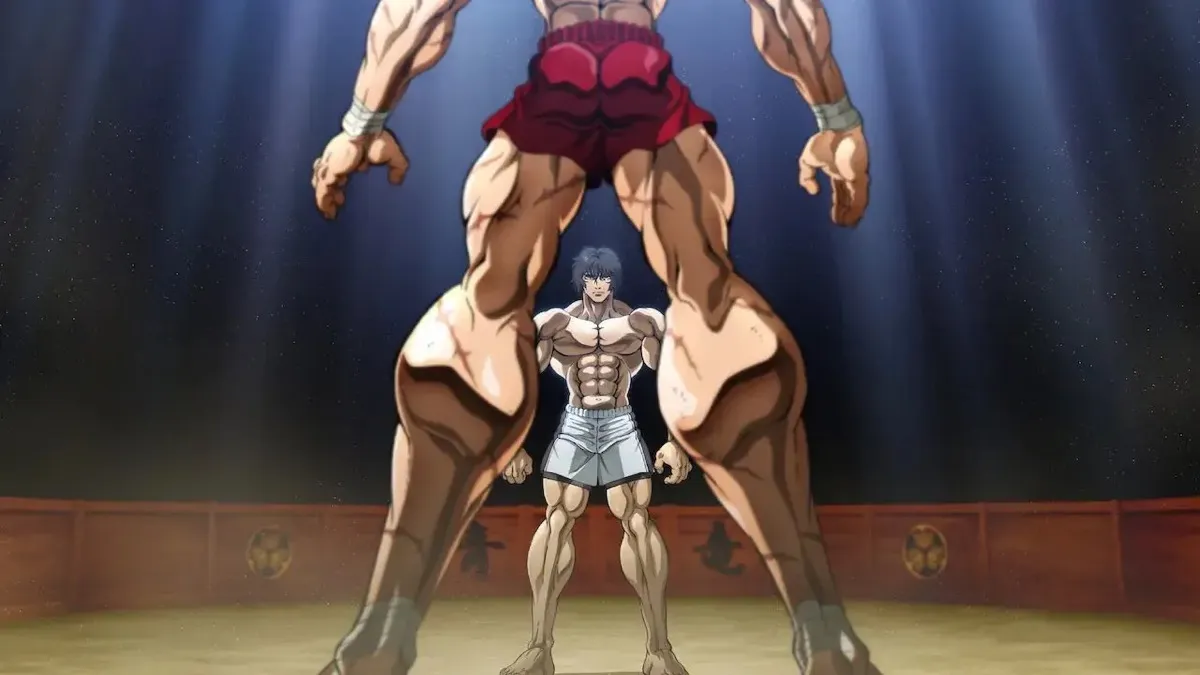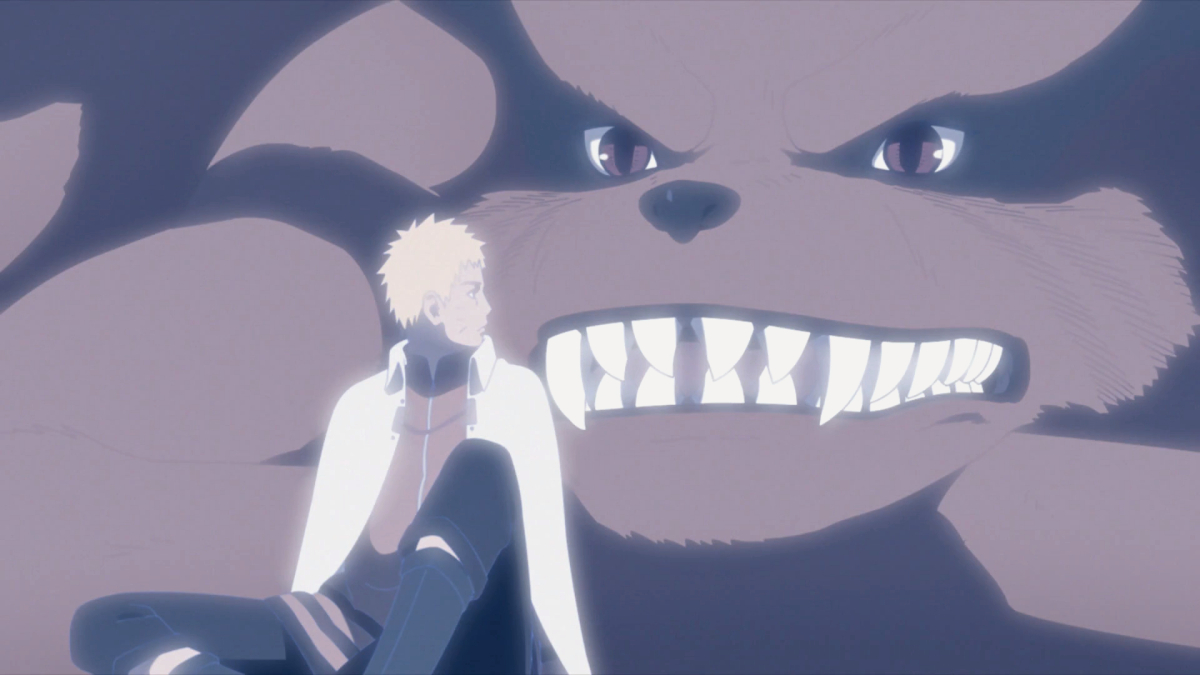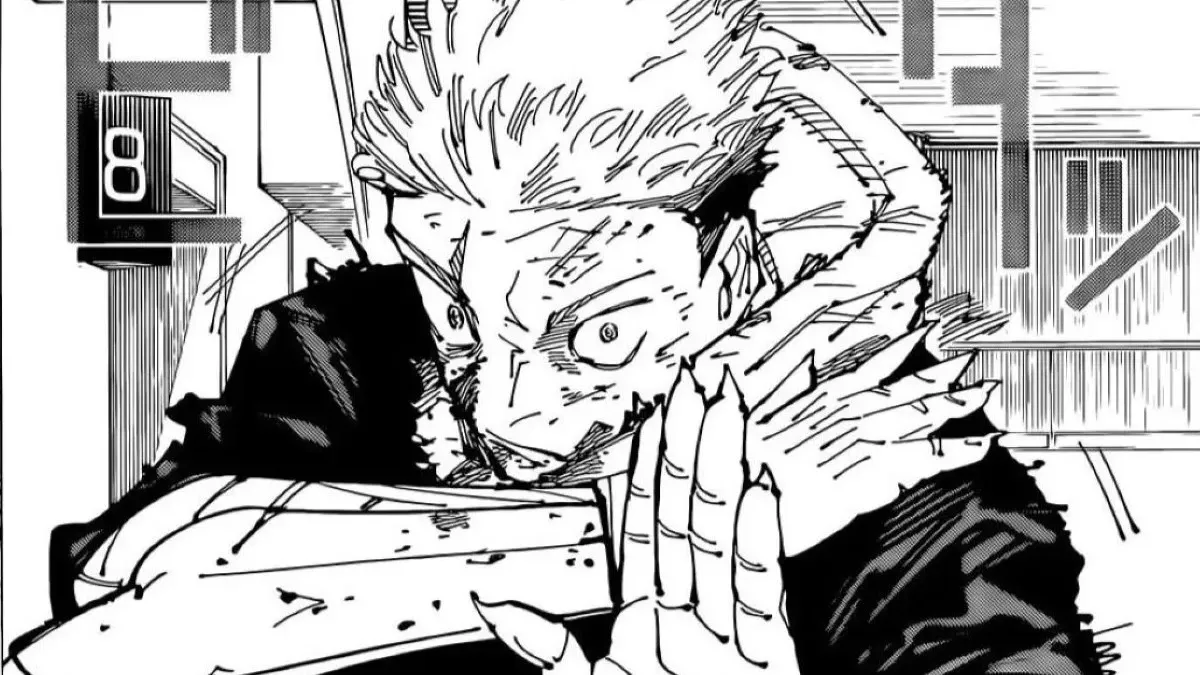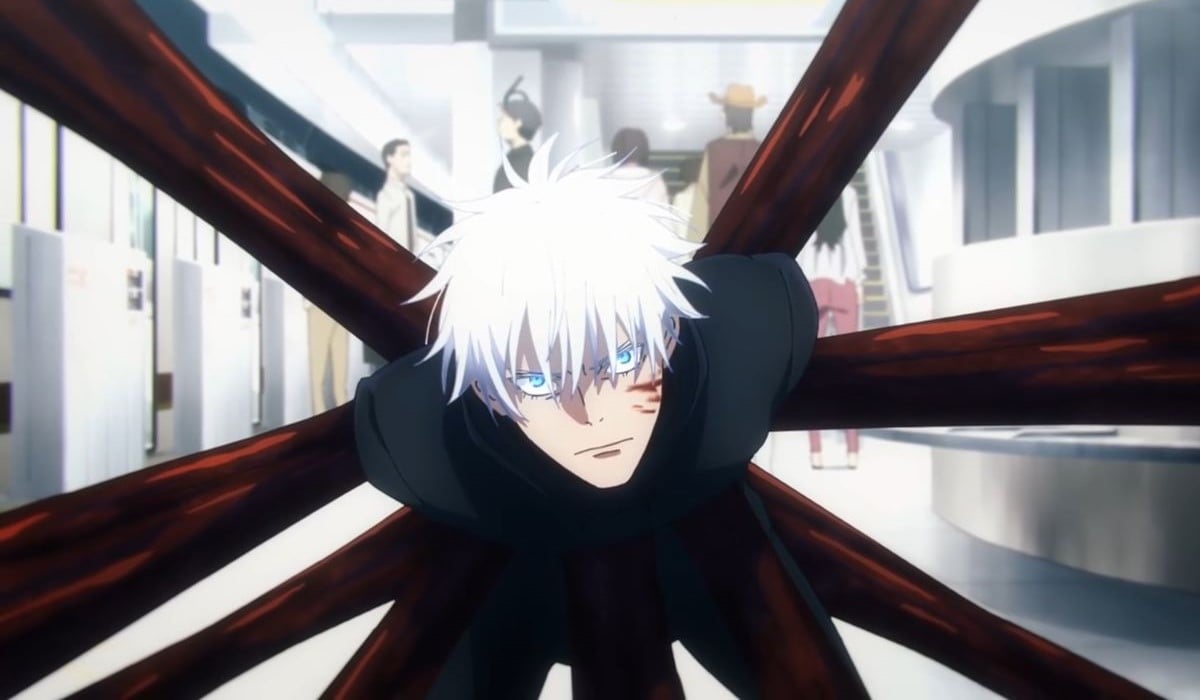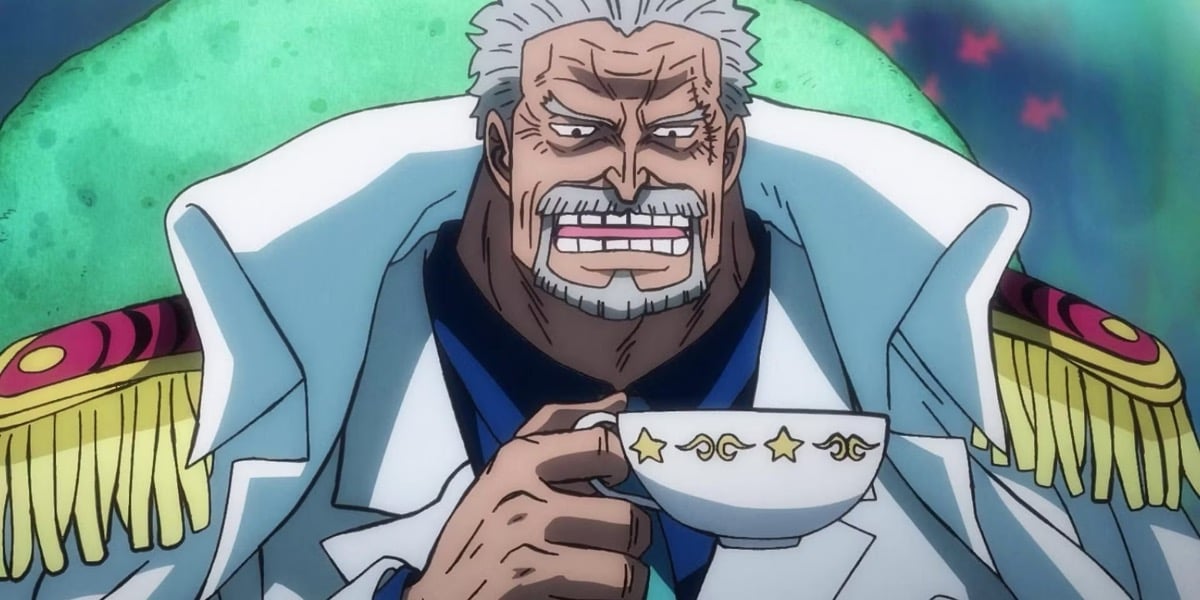A few days ago, a fellow writer and I were discussing, over email, how the hell to write a review for Netflix’s Scott Pilgrim Takes Off. After all, “HOLY SH*T, it’s perfect??!!” is only four words and not particularly befitting of a so-called media professional.
Still, I don’t have a clever, punchy title for the review to this show. As Julie Powers would say (possibly under incredible duress), Scott Pilgrim Takes Off is f**king phenomenal.
To come in with hopes as absurdly high as mine were and to have them exceeded is a feat worthy of the highest praise. Scott Pilgrim Takes Off is a triumph. It’s funny. It’s thoughtful and deeply resonant, perhaps especially for millennials. The animation is gorgeous. The score is fantastic. The needle drops are perfect—Liam Lynch somehow wrote “The United States of Whatever” twenty years ago but for this very moment.
In short, Scott Pilgrim Takes Off is wonderful. The only reason someone might not have a good time is if they are strongly attached to the idea of where it “should” go.
Because if you’re that familiar with the series, Scott Pilgrim Takes Off has some surprises for you.
Scott Pilgrim, a history
Scott Pilgrim Takes Off, of which all eight episodes are now on Netflix, is a series that immediately garnered high hopes after its announcement. Bryan Lee O’Malley’s six-book Scott Pilgrim graphic novel series ran from 2004 to 2010 and is arguably the defining graphic novel of a generation—at least if we’re talking Western works. It’s the tale of Scott, a lovable slacker living in Toronto, who has to fight “Seven Evil Exes” in order to be able to date the woman of his dreams, Ramona Flowers. It’s also gloriously steeped in nerd culture. For instance, Scott’s rock band is named Sex Bob-omb, which I still think is one of my favorite band names ever.
In 2010, a film adaptation starring Michael Cera as the titular Scott Pilgrim became beloved by an even wider audience, who then went back and discovered O’Malley’s original work. Incidentally, the film’s supporting cast has aged like fine wine: Aubrey Plaza, Jason Schwartzman, Brie Larson, Ellen Wong, Chris Evans, and more. A video game, scored by the incredible chiptune rock band Anamanaguchi, came out the same year.
So 2010 was very much the year of Scott Pilgrim. But until Scott Pilgrim Takes Off, there were been no further explorations of the series, which helps to explain why, when Netflix announced an anime adaptation that would feature the entire original cast of the 2010 film, people lost their minds—and not just any anime studio was behind it. The show comes to us from Science Saru, which was founded by Masaaki Yuasa (Keep Your Hands Off Eizoken!; Night Is Short, Walk on Girl; Inu-Oh) and which I would argue—passionately—is the best in the biz. Yuasa didn’t helm this project, but the playfulness of his works absolutely colors Takes Off.
To sprinkle additional hype onto the production, O’Malley wrote the script, the director of the 2010 film returned as a producer, and Anamanaguchi wrote the score. The cast and crew list of Scott Pilgrim Takes Off is basically every iteration of the property combining to form a super team.
Normally, this would be the place you’d say, “It seems too good to be true, but what could go wrong?” and have some dramatic counterexample of how it did, unfortunately, go wrong. But that’s simply not the case here. Everything in Takes Off goes astonishingly, resoundingly right.
Taking off
I do not want to spoil the surprises of Scott Pilgrim Takes Off in this piece. I had the incredible pleasure of being blindsided by what the series had in store for me, and I loved every minute of it. I heartily recommend going in as unaware as you can, so I will be incredibly vague about spoilers going forward.
Perhaps a criticism a modern audience could lay on the original Scott Pilgrim is how tired the “boy fights for girl” trope is. I’d argue Scott Pilgrim already knew this, but Scott Pilgrim Takes Off really understands this. Takes Off is actively in conversation with the original work, in astounding and highly refreshing ways. In fact, the main character of the show isn’t even Scott; it’s Ramona, and her emotions—past and present—with her exes are centered.
After the film especially, Ramona (perhaps unfairly) often got pegged as a quintessential example of the manic pixie dream girl—flighty, alluringly mysterious. Takes Off builds Ramona’s character up to where her motivations, hopes, and struggles become crystal clear. Her faults become highly empathetic. It’s one of the primary areas in which you could start pondering whether Takes Off exceeds its source material—though I think it’s more accurate to say it understood the assignment very well, so to speak.
Similarly, within the Evil Exes, Takes Off feels arguably more interested in another one of the Evil Exes (redacted for spoilers) than the “big bad,” Gideon Graves—another dramatic shift. In fact, all the secondary characters really get the chance to spread their wings. Wallace Wells, Scott’s “cool gay roommate,” is my MVP of the show. Young Neal also gets a lot more to do than in the 2010 film, and it’s a delight. Naming a semi-naive friend “Young [Blank],” even when they’re exactly your same age, will forever entertain me.
If Scott Pilgrim Takes Off does nothing else (which is absolutely not the case), it proves the staying power of these characters. The modern lens changes how we see them a bit, but Takes Off also turns the camera for us. Scott remains lovable, but the show is aware that his heavy slacker tendencies are worth a little more scrutiny now. The updated lens also demonstrates that, somehow, a few characters feel even funnier now than 13 years ago. Todd Ingram’s “vegan powers” were truly ahead of their time.
Warm fuzzies
Scott Pilgrim Takes Off shines in so many ways that vocalizing all of them feels like a marathon. There are so many loving little touches in the show. In every episode, Ramona re-dyes her hair to the same animated choreography and the same music. It’s a 10-second animated equivalent of pressing the refresh button, a small but refreshing gesture that makes you wonder why all shows don’t have a cute gimmick like this.
Such is the genius of Science Saru. It struck me several times that Scott Pilgrim Takes Off looks and feels a little like if Steven Universe were aimed at a slightly older audience, which makes sense, when you think about it. Steven Universe is an American cartoon heavily drawing from anime, and Takes Off is an anime heavily drawing from American cartoons. This is their middle ground. That also means that Science Saru’s efforts to make an English-speaking anime work remarkably well. There’s a couple lip wags that took me out of the show’s spell for a second, but they solved the conundrum well.
Overall, Takes Off simply understands what’s exceptional about Scott Pilgrim. Part of the appeal of the original run of Scott Pilgrim is how it nailed the mid-2000s generation, but that was nearly 20 years ago now—which means Takes Off is now a vehicle of nostalgia: for video stores, for fuzzy rock with effected vocals, for FaceTime not being a thing. This series is the first instance I’ve encountered where 2000s nostalgia really hits and lands. It is both beautiful and (if you’re a millennial) terrifying.
Takes Off leans into ’90s nostalgia, as well. In fact, the entire series is heavily—heavily—influenced by Street Fighter. “Let’s fight!” an announcer will say, as the screen is split in the style of a Street Fighter loading screen. The titles of each episode are displayed in perfectly stylized pixel art, with “press start” down below. As in the original, defeated individuals are turned into coins. (“They respawn at home,” someone says later.) A character pops up late in the series whose design is obviously influenced by Ryu.
But if Scott Pilgrim Takes Off were only nostalgia and well-executed nods to nerd culture (SONIC), it wouldn’t hit like it does. This is a show with serious heart, which explores love with newfound wisdom. All relationships are complicated and have their messy spots, even the successful ones. They can make people bring out the best in each other and simultaneously spark enough fear that your worst self manifests. Communication can be the make or break point upon which a relationship’s success turns—and communication can be the scariest aspect of all.
This exploration is where Takes Off really blooms, and it’s the thread that leads it to firmly distinguish its own identity. The genius of Scott Pilgrim Takes Off lies in knowing exactly how it relates to its predecessor. To know exactly what I mean, you’ll just have to watch the series and find out.
For now, just know that the result is f**king phenomenal.
(featured image: Netflix)



